 Search by Keyword
|
“BABY IT’S YOU”
(Mack David – Burt Bacharach – Barney Williams)
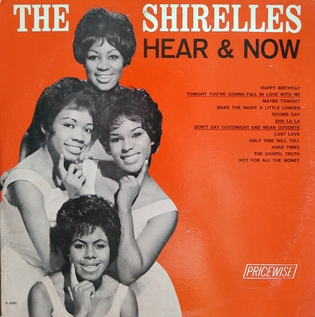 The Beatles had a special love for the music of "girl groups" of the early '60s. When in a pinch for time in the final three of hours of recording their first album, they hurriedly selected some cover tunes that the band particularly loved and enjoyed performing. Out of the six cover songs they recorded for their first LP, three were "girl group" songs, two of which were originally performed by The Shirelles. The second of their songs that The Beatles selected to record on this day was, not a b-side as was their first choice “Boys,” but a well known US Top Ten hit that they had been performing for about a year in their "stage act." The Beatles had a special love for the music of "girl groups" of the early '60s. When in a pinch for time in the final three of hours of recording their first album, they hurriedly selected some cover tunes that the band particularly loved and enjoyed performing. Out of the six cover songs they recorded for their first LP, three were "girl group" songs, two of which were originally performed by The Shirelles. The second of their songs that The Beatles selected to record on this day was, not a b-side as was their first choice “Boys,” but a well known US Top Ten hit that they had been performing for about a year in their "stage act."
Songwriting History
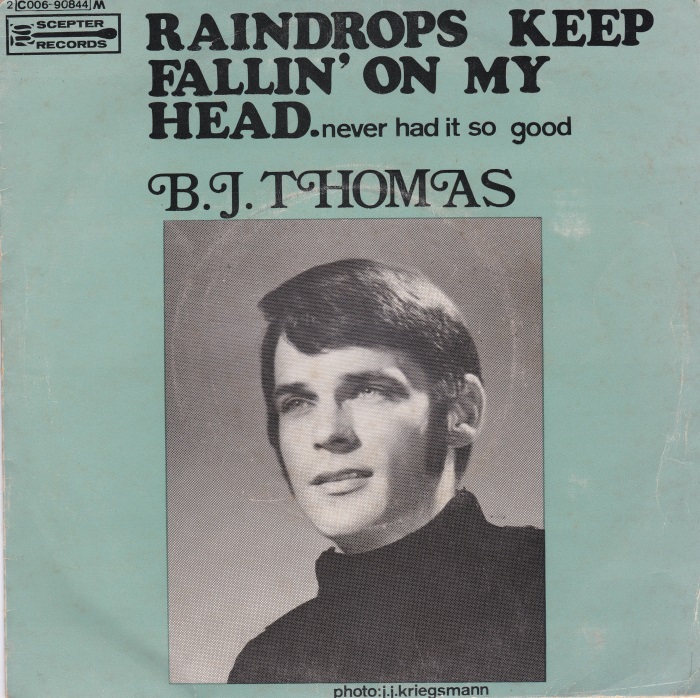 The statement that The Beatles had recorded music by Burt Bacharach would no doubt be greeted with a response that includes denial. Avid Beatle fans, on the other hand, know otherwise. The group may not have recorded a rendition of his “Raindrops Keep Falling On My Head,” but this very same composer happened to co-write the classic Shirelles’ hit “Baby It’s You,” which reached #8 on the US Billboard Hot 100 in February of 1962. The statement that The Beatles had recorded music by Burt Bacharach would no doubt be greeted with a response that includes denial. Avid Beatle fans, on the other hand, know otherwise. The group may not have recorded a rendition of his “Raindrops Keep Falling On My Head,” but this very same composer happened to co-write the classic Shirelles’ hit “Baby It’s You,” which reached #8 on the US Billboard Hot 100 in February of 1962.
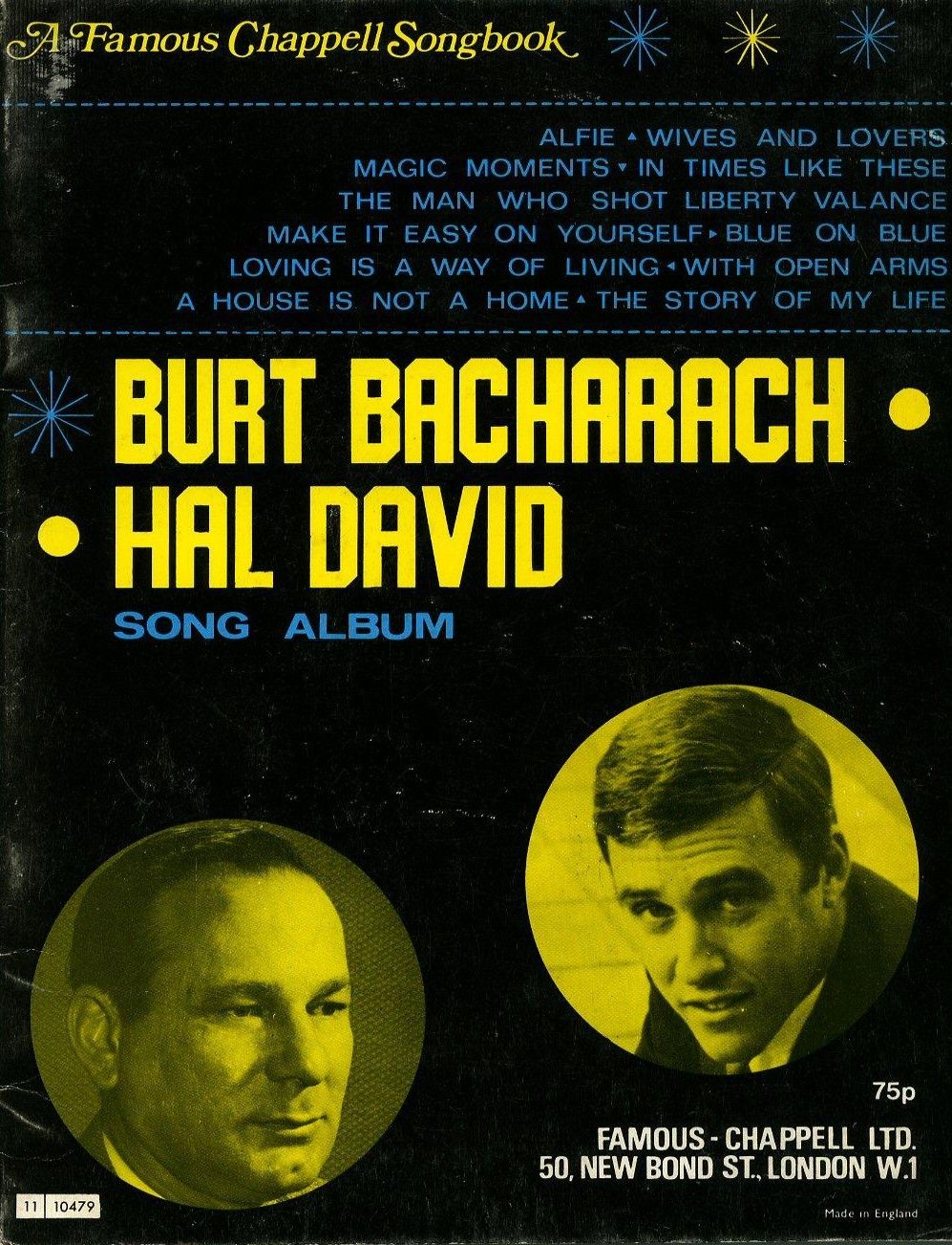 In actuality, Burt Bacharach had an impressive and long-standing career as an award winning composer, producer, arranger and conductor. He is most known for his collaborations with lyricist Hal David with whom he has written an impressive amount of hits throughout the '60s, many of these being recorded by Dionne Warwick. As a skilled songwriter, Burt Bacharach has racked up a total of 70 Top 40 hits in the US. Very impressive! In actuality, Burt Bacharach had an impressive and long-standing career as an award winning composer, producer, arranger and conductor. He is most known for his collaborations with lyricist Hal David with whom he has written an impressive amount of hits throughout the '60s, many of these being recorded by Dionne Warwick. As a skilled songwriter, Burt Bacharach has racked up a total of 70 Top 40 hits in the US. Very impressive!
After studying music theory at McGill University, The Music Academy of The West and The Mannes School of Music, Burt Bacharach had become the bandleader, pianist and arranger for Marlene Dietrich throughout the '50s and early '60s. Like Gerry Goffin and Carole King, Burt Bacharach joined the Brill Building team of songwriters in 1957 where he teamed up with lyricist Hal David. Success came quickly with their first US hit, “The Story Of My Life,” which was the very first hit by country star Marty Robbins. This song reached number #15 on the Billboard Hot 100 as well as #1 on the Country and Western charts in the US.
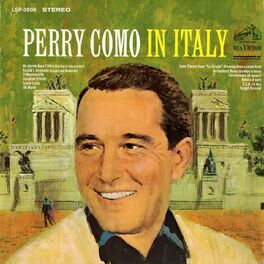 Burt Bacharach's hit-writing fortunes increased much more throughout the late '50s and early '60s, co-writing hits for Perry Como, Johnny Mathis, Etta James and various other artists. In late 1961, Burt Bacharach co-composed and arranged the song “Baby It’s You” for the popular girl group The Shirelles, which was one of only four songs he ever worked with them on (and two of those songs went unreleased). Burt Bacharach's hit-writing fortunes increased much more throughout the late '50s and early '60s, co-writing hits for Perry Como, Johnny Mathis, Etta James and various other artists. In late 1961, Burt Bacharach co-composed and arranged the song “Baby It’s You” for the popular girl group The Shirelles, which was one of only four songs he ever worked with them on (and two of those songs went unreleased).
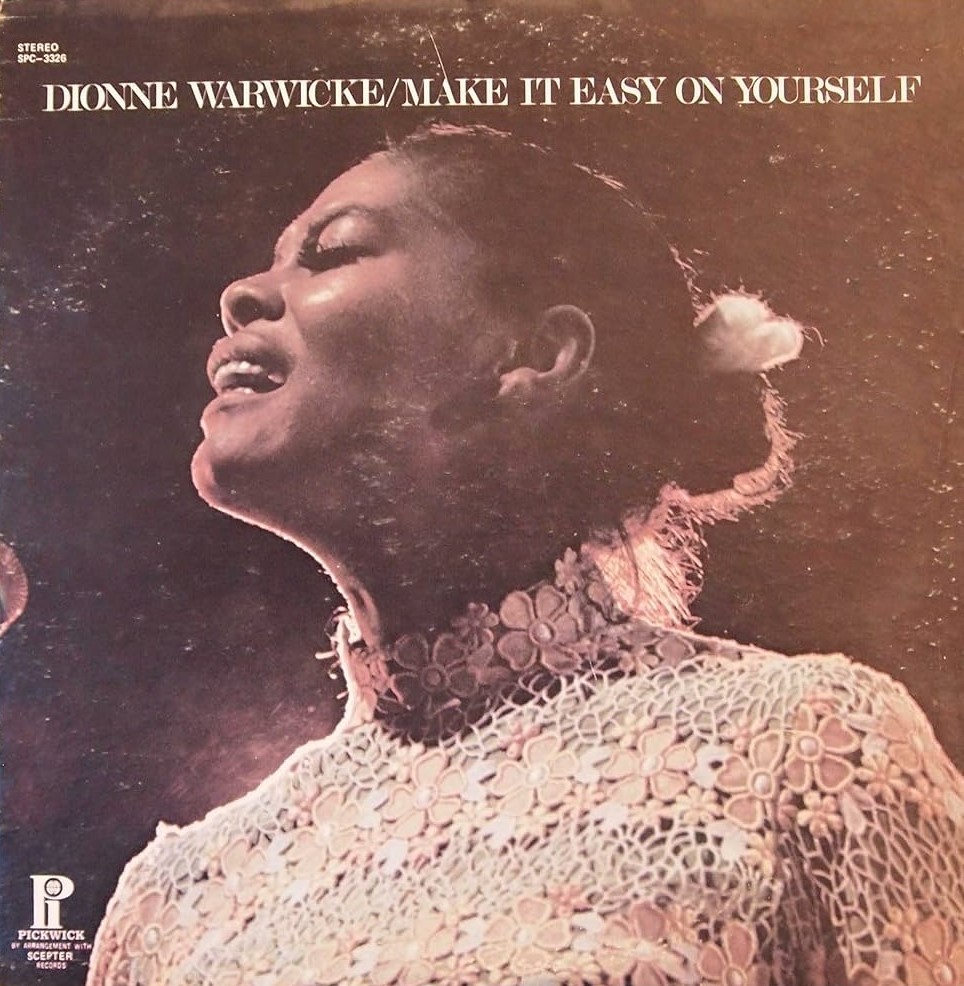 His attention was turned quickly to writing many other hits for other artists throughout the next few years, especially focusing his attention on a demo singer and sometimes replacement singer for The Shirelles named Dionne Warwick. When she was used by Burt Bacharach to sing a demo version of the song “Make It Easy On Yourself,” she was discouraged to find that the song was intended for Jerry Butler and not for herself. She exclaimed, “Don’t make me over, man,” which inspired Burt Bacharach and Hal David to compose the song “Don’t Make Me Over,” this becoming Dionne Warwick’s first US Top 40 hit. This began a string of 22 Top 40 hits for Dionne Warwick on the Billboard Hot 100 stretching from 1962 to 1972, mostly composed by Burt Bacharach and Hal David (including “Make It Easy On Yourself”). His attention was turned quickly to writing many other hits for other artists throughout the next few years, especially focusing his attention on a demo singer and sometimes replacement singer for The Shirelles named Dionne Warwick. When she was used by Burt Bacharach to sing a demo version of the song “Make It Easy On Yourself,” she was discouraged to find that the song was intended for Jerry Butler and not for herself. She exclaimed, “Don’t make me over, man,” which inspired Burt Bacharach and Hal David to compose the song “Don’t Make Me Over,” this becoming Dionne Warwick’s first US Top 40 hit. This began a string of 22 Top 40 hits for Dionne Warwick on the Billboard Hot 100 stretching from 1962 to 1972, mostly composed by Burt Bacharach and Hal David (including “Make It Easy On Yourself”).
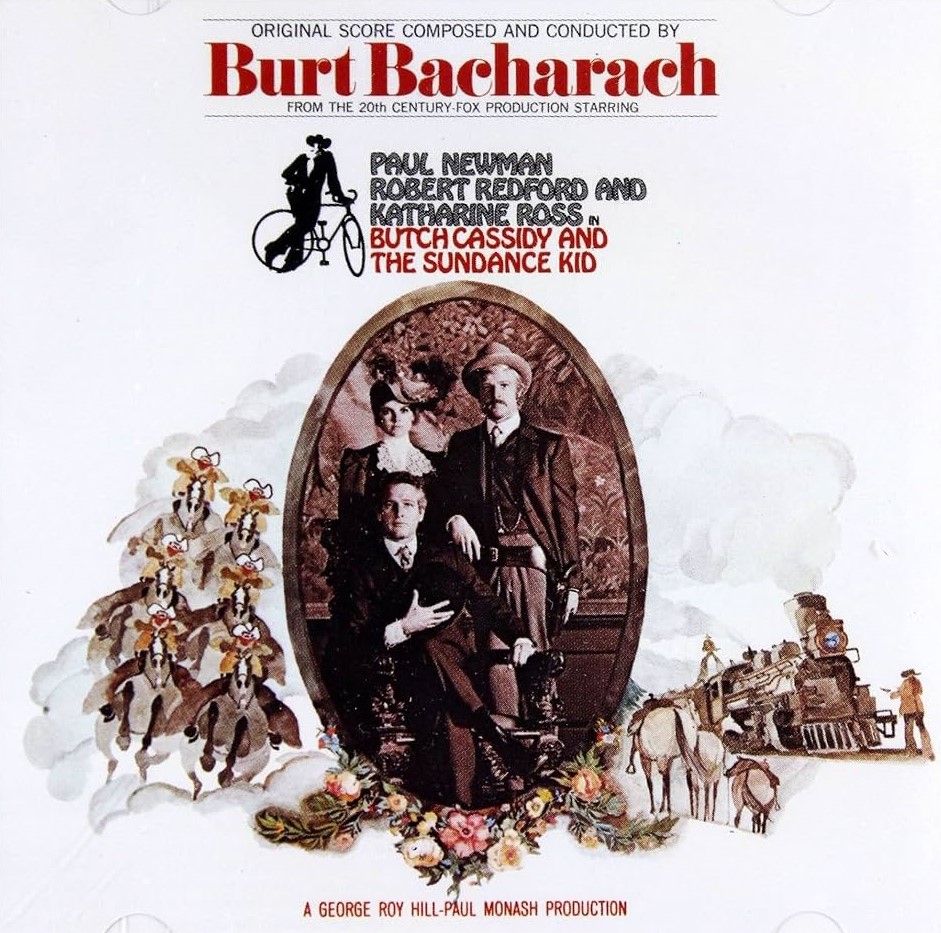 After Burt Bacharach continued to write for Gene Pitney, Bobby Vee, Brook Benton, The Drifters and many other artists, he also started to concentrate on a solo career in 1965 as well as scores for motion pictures. His soundtracks have included "What’s New Pussycat," "The Blob," "Casino Royale," "After The Fox" and "Butch Cassidy And The Sundance Kid." He also branched out to do Broadway scores, such as “Promises, Promises,” its title track actually becoming yet another Dionne Warwick hit. After Burt Bacharach continued to write for Gene Pitney, Bobby Vee, Brook Benton, The Drifters and many other artists, he also started to concentrate on a solo career in 1965 as well as scores for motion pictures. His soundtracks have included "What’s New Pussycat," "The Blob," "Casino Royale," "After The Fox" and "Butch Cassidy And The Sundance Kid." He also branched out to do Broadway scores, such as “Promises, Promises,” its title track actually becoming yet another Dionne Warwick hit.
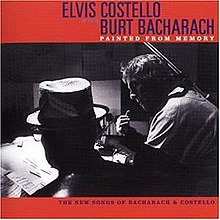 After working with various other artists (Herb Alpert, B.J. Thomas, The Fifth Dimention and The Carpenters to name a few) as well as more film soundtracks (like “Night Shift,” “Arthur” and “Arthur 2: On The Rocks”) Burt Bacharach continued his ascent to icon status throughout the '70s and '80s. The '90s saw him collaborate with London songwriter Elvis Costello (also a McCartney collaborator in the late '80s) on the Grammy award-winning album titled “Painted From Memory.” Later generations have also come to know Burt Bacharach's name through references and appearances in the Austin Powers movies and comedic television commercials. Burt Bacharach has proved to be one of the most respected names in the music business, his death on February 8th, 2023 of natural causes at the age of 94 being mourned by the masses in the music community. After working with various other artists (Herb Alpert, B.J. Thomas, The Fifth Dimention and The Carpenters to name a few) as well as more film soundtracks (like “Night Shift,” “Arthur” and “Arthur 2: On The Rocks”) Burt Bacharach continued his ascent to icon status throughout the '70s and '80s. The '90s saw him collaborate with London songwriter Elvis Costello (also a McCartney collaborator in the late '80s) on the Grammy award-winning album titled “Painted From Memory.” Later generations have also come to know Burt Bacharach's name through references and appearances in the Austin Powers movies and comedic television commercials. Burt Bacharach has proved to be one of the most respected names in the music business, his death on February 8th, 2023 of natural causes at the age of 94 being mourned by the masses in the music community.
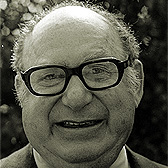 Lyricist Hal David, as mentioned above, also boasts quite an impressive career, although it is not Hal David that we are concerned with here (as various Beatles books indicate). His older brother Mack David is actually the co-lyricist of the song “Baby It’s You.” Lyricist Hal David, as mentioned above, also boasts quite an impressive career, although it is not Hal David that we are concerned with here (as various Beatles books indicate). His older brother Mack David is actually the co-lyricist of the song “Baby It’s You.”
After Mack David had seriously considered becoming an attorney (attending both Cornell and St. John’s University Law School), he put aside that aspiration in order to follow his dream of becoming a songwriter and took up that profession at New York City’s Tin Pan Alley in the '40s. He previously had advised his brother Hal David not to pursue a songwriting career, but luckily for history’s sake, both brothers gave in to their songwriting passion.
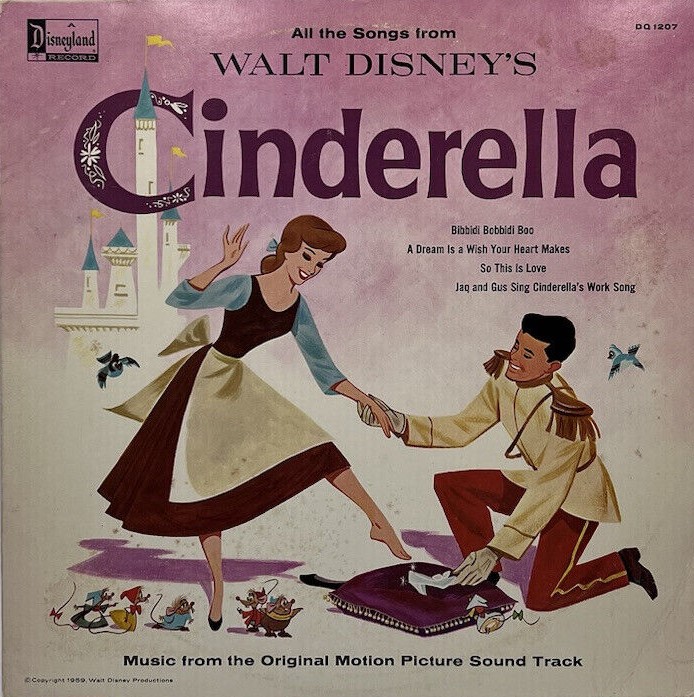 Mack David’s success started as early as 1939 with the Glenn Miller song “Moon Love” and continued throughout the '40s with songs performed by Duke Ellington, such as “I’m Just A Lucky So-And-So.” In 1950 he moved to Hollywood and became active in songwriting for television and movies. He boasts an impressive number of songwriting credits for Disney animated movies, such as “A Dream Is A Wish Your Heart Makes” from Cinderella as well as the film's Acadamy Award winning “Bibbidi Bobbidi Boo” and “The Unbirthday Song” from Alice In Wonderland. Mack David’s success started as early as 1939 with the Glenn Miller song “Moon Love” and continued throughout the '40s with songs performed by Duke Ellington, such as “I’m Just A Lucky So-And-So.” In 1950 he moved to Hollywood and became active in songwriting for television and movies. He boasts an impressive number of songwriting credits for Disney animated movies, such as “A Dream Is A Wish Your Heart Makes” from Cinderella as well as the film's Acadamy Award winning “Bibbidi Bobbidi Boo” and “The Unbirthday Song” from Alice In Wonderland.
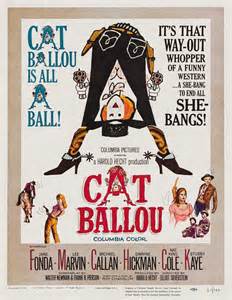 Mack David received more Academy Award nominations (eight in total) for his work in films, which include “The Hanging Tree,” “Bachelor In Paradise,” “It’s A Mad Mad Mad Mad World” and also “Cat Ballou.” And with new songwriting partner Jerry Livingston, Mack David wrote a number of successful theme songs for television shows such as “Casper The Friendly Ghost,” “77 Sunset Strip,” “Hawaiian Eye,” as well as the song “This Is It” which was used in the '60s Saturday morning series “The Bugs Bunny Hour.” Mack David received more Academy Award nominations (eight in total) for his work in films, which include “The Hanging Tree,” “Bachelor In Paradise,” “It’s A Mad Mad Mad Mad World” and also “Cat Ballou.” And with new songwriting partner Jerry Livingston, Mack David wrote a number of successful theme songs for television shows such as “Casper The Friendly Ghost,” “77 Sunset Strip,” “Hawaiian Eye,” as well as the song “This Is It” which was used in the '60s Saturday morning series “The Bugs Bunny Hour.”
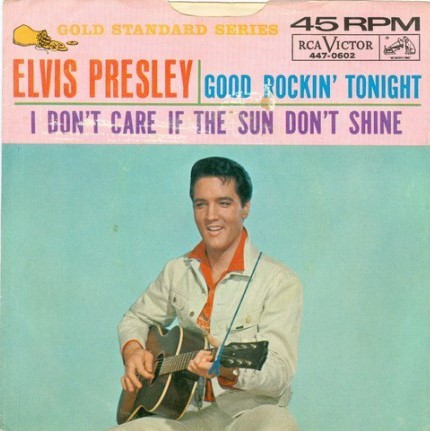 Mack David was indeed privileged to achieve having one of his compositions recorded by both of the biggest recording artists in music history. In addition to the Beatles' recording of his “Baby It’s You,” Elvis Presley did a rockabilly cover of his song “I Don’t Care If The Sun Don’t Shine” in 1954 on one of his legendary Sun Records releases, the original version being released by Patti Page in 1950. Mack David was indeed privileged to achieve having one of his compositions recorded by both of the biggest recording artists in music history. In addition to the Beatles' recording of his “Baby It’s You,” Elvis Presley did a rockabilly cover of his song “I Don’t Care If The Sun Don’t Shine” in 1954 on one of his legendary Sun Records releases, the original version being released by Patti Page in 1950.
Mack David was honored by being inducted into the Songwriters Hall Of Fame in 1975, which followed his brother Hal David being inducted in 1972. Mack David died on December 30th, 1993 at his home in Rancho Mirage, California.
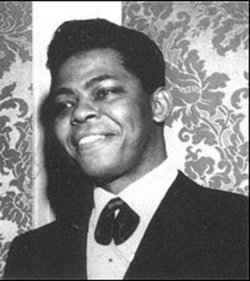 Barney Williams was a pseudonym utilized by Luther Dixon, who was a successful songwriter (he was the co-composer of “Boys” which was also contained on this Beatles album) and the manager of artist development at Scepter Records, the label that released "Baby It's You" by The Shirelles. Luther Dixon had been hired as a promo man for Scepter Records and was responsible for re-writing the lyrics for the song "I'll Cherish You," this being the original title for this Burt Bacharach / Mack David composition. Luther Dixon, using the name Barney Williams, was therefore the man who transformed the song title into “Baby It’s You,” as well as re-writing some of the other lyrics and also being producer on the original Shirelles' recording. As an interesting footnote, American Soul vocalist Tommy Hunt recorded a version of the song with the original lyrics. Barney Williams was a pseudonym utilized by Luther Dixon, who was a successful songwriter (he was the co-composer of “Boys” which was also contained on this Beatles album) and the manager of artist development at Scepter Records, the label that released "Baby It's You" by The Shirelles. Luther Dixon had been hired as a promo man for Scepter Records and was responsible for re-writing the lyrics for the song "I'll Cherish You," this being the original title for this Burt Bacharach / Mack David composition. Luther Dixon, using the name Barney Williams, was therefore the man who transformed the song title into “Baby It’s You,” as well as re-writing some of the other lyrics and also being producer on the original Shirelles' recording. As an interesting footnote, American Soul vocalist Tommy Hunt recorded a version of the song with the original lyrics.
 The Shirelles' original version of "Baby It's You" was their sixth Top 40 hit on the US Billboard Hot 100 chart, this being their fourth Top Ten (peaking at #8 on the Hot 100 and #3 on the R&B chart). The Shirelles lead vocalist, Shirley Owens, overdubbed her vocals over the backing track of the original demo that was recorded under the supervision of Burt Bacharach. Shirley Owens was the only member of The Shirelles to appear on the recording, which included Burt Bacharach himself on background vocals. The Shirelles' original version of "Baby It's You" was their sixth Top 40 hit on the US Billboard Hot 100 chart, this being their fourth Top Ten (peaking at #8 on the Hot 100 and #3 on the R&B chart). The Shirelles lead vocalist, Shirley Owens, overdubbed her vocals over the backing track of the original demo that was recorded under the supervision of Burt Bacharach. Shirley Owens was the only member of The Shirelles to appear on the recording, which included Burt Bacharach himself on background vocals.
Recording History
 While manager Brian Epstein included "Baby It's You" on a suggested song list he prepared for the group to play at their first EMI session on June 6th, 1962, they never got to it. As for the released recording of the song featured on their first British LP "Please Please Me," this was the next to last song recorded during their landmark one day recording session in EMI Studio Two held on February 11th, 1963. While manager Brian Epstein included "Baby It's You" on a suggested song list he prepared for the group to play at their first EMI session on June 6th, 1962, they never got to it. As for the released recording of the song featured on their first British LP "Please Please Me," this was the next to last song recorded during their landmark one day recording session in EMI Studio Two held on February 11th, 1963.
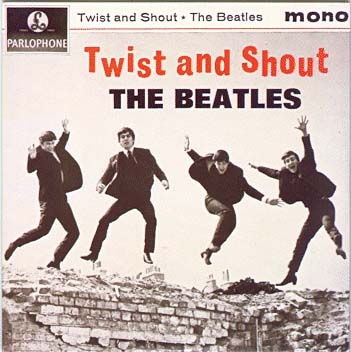 Three takes were recorded live with no overdubs, including one false start, approximately between 9:30 and 10 pm during the evening session. "Take three" was the complete version that was used for the album, Lennon's current cold being detected in his strained vocals during the lines "don't want nobody, nobody" and then especially during their following song recorded on that day, "Twist And Shout." As with the other ten songs they recorded on this day, no mixes were created for "Baby It's You" after this session concluded, there being one particular reason in this case. Something additional needed to be done for the solo portion of the song. Three takes were recorded live with no overdubs, including one false start, approximately between 9:30 and 10 pm during the evening session. "Take three" was the complete version that was used for the album, Lennon's current cold being detected in his strained vocals during the lines "don't want nobody, nobody" and then especially during their following song recorded on that day, "Twist And Shout." As with the other ten songs they recorded on this day, no mixes were created for "Baby It's You" after this session concluded, there being one particular reason in this case. Something additional needed to be done for the solo portion of the song.
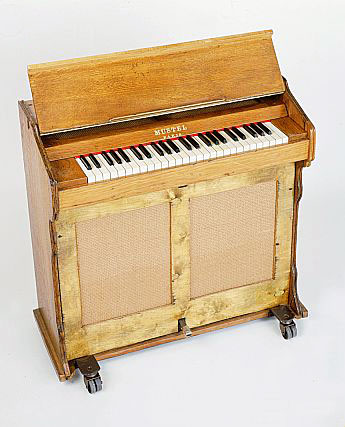 George Martin rose to the task on an overdubbing session held nine days later on February 20th, 1963 while The Beatles were on their national tour with Helen Shapiro. After overdubbing himself on piano for their track “Misery,” George Martin made two attempts at overdubbing himself playing celeste on the top of George Harrison's guitar notes during the instrumental section of “Baby It’s You.” While the original two-track tape was being re-recorded onto a different two-track tape machine, George Martin simultaneously performed the celeste overdub, the second of his two attempts ("take five") being deemed as best. The celeste is a piano-like instrument which usually comprises four octaves that transpose the notes one octave higher when played. It consists of a keyboard that triggers hammers to strike a graduated set of metal plates suspended over wooden resonators. George Martin rose to the task on an overdubbing session held nine days later on February 20th, 1963 while The Beatles were on their national tour with Helen Shapiro. After overdubbing himself on piano for their track “Misery,” George Martin made two attempts at overdubbing himself playing celeste on the top of George Harrison's guitar notes during the instrumental section of “Baby It’s You.” While the original two-track tape was being re-recorded onto a different two-track tape machine, George Martin simultaneously performed the celeste overdub, the second of his two attempts ("take five") being deemed as best. The celeste is a piano-like instrument which usually comprises four octaves that transpose the notes one octave higher when played. It consists of a keyboard that triggers hammers to strike a graduated set of metal plates suspended over wooden resonators.
 George Martin also attempted a piano overdub in a particular section of the song using the same re-recording process onto another two-track machine. It is undetermined what section of the song the piano part was played in because he decided not to use this overdub in the song after all. "Take six" of "Baby It's You," featuring the piano overdub has never been officially released to the public. "Take five" became the approved complete version which contained the celeste overdub. George Martin also attempted a piano overdub in a particular section of the song using the same re-recording process onto another two-track machine. It is undetermined what section of the song the piano part was played in because he decided not to use this overdub in the song after all. "Take six" of "Baby It's You," featuring the piano overdub has never been officially released to the public. "Take five" became the approved complete version which contained the celeste overdub.
 Five days later, on February 25th, 1963, George Martin, with engineers Norman Smith and A.B. Lincoln, performed both the mono and stereo mixes for the entire first album, which contained “Baby It’s You.” Once again, The Beatles were not present because they were still on tour and did not participate in mixing sessions until much later on in their career. "Take five" of "Baby It's You" was used to create both the mono and stereo mixes as released worldwide. Five days later, on February 25th, 1963, George Martin, with engineers Norman Smith and A.B. Lincoln, performed both the mono and stereo mixes for the entire first album, which contained “Baby It’s You.” Once again, The Beatles were not present because they were still on tour and did not participate in mixing sessions until much later on in their career. "Take five" of "Baby It's You" was used to create both the mono and stereo mixes as released worldwide.
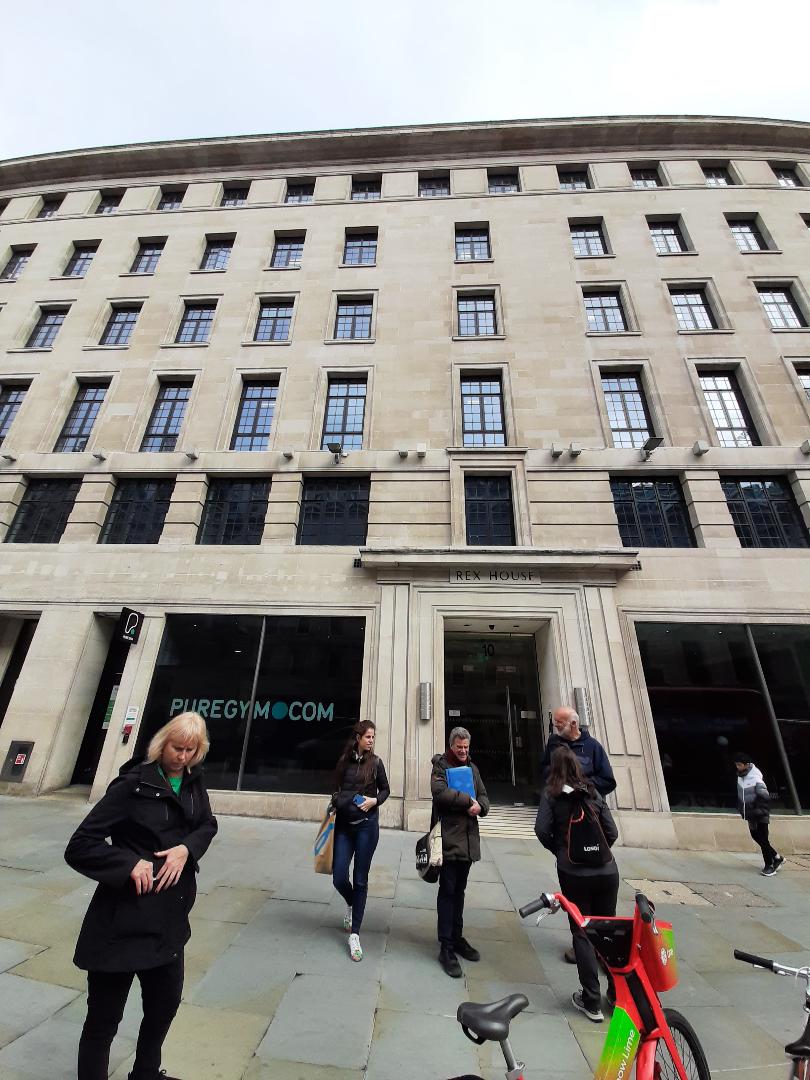 The Beatles recorded "Baby It's You" three times for BBC radio, the first one being on April 1st, 1963 in Studio One of BBC Piccadilly Studios in London between 2:30 and 5:30 pm for the BBC radio show “Side By Side,” which aired on April 22nd between 5 and 5:29 pm. The second was their rendition that appeared on the “Live At The BBC” album, which was recorded on June 1st, 1963 between 9:30 am and 1:30 pm at BBC Paris Studio in London for the third edition of their series “Pop Go The Beatles,” this produced by Terry Henbery and broadcast on June 11th, 1963 sometime between 5 and 5:29 pm. Interestingly, John vocally reprises the first verse lyrics when singing the third verse as The Shirelles originally did, unlike The Beatles' own official recording which instead repeats the second verse lyrics. Their third performance for BBC radio occurred on August 1st, 1963 at The Playhouse Theatre in Manchester between 4 and 6 pm for the twelfth edition of “Pop Go The Beatles,” also produced by Terry Henebery. Although that show aired on September 3rd of that year, this newly recorded version of “Baby It’s You” did not get played on the radio. The Beatles recorded "Baby It's You" three times for BBC radio, the first one being on April 1st, 1963 in Studio One of BBC Piccadilly Studios in London between 2:30 and 5:30 pm for the BBC radio show “Side By Side,” which aired on April 22nd between 5 and 5:29 pm. The second was their rendition that appeared on the “Live At The BBC” album, which was recorded on June 1st, 1963 between 9:30 am and 1:30 pm at BBC Paris Studio in London for the third edition of their series “Pop Go The Beatles,” this produced by Terry Henbery and broadcast on June 11th, 1963 sometime between 5 and 5:29 pm. Interestingly, John vocally reprises the first verse lyrics when singing the third verse as The Shirelles originally did, unlike The Beatles' own official recording which instead repeats the second verse lyrics. Their third performance for BBC radio occurred on August 1st, 1963 at The Playhouse Theatre in Manchester between 4 and 6 pm for the twelfth edition of “Pop Go The Beatles,” also produced by Terry Henebery. Although that show aired on September 3rd of that year, this newly recorded version of “Baby It’s You” did not get played on the radio.
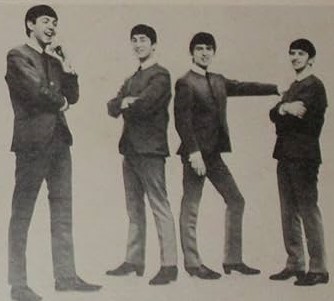 On August 21st, 1963, while at a six consecutive night residency in Bournemouth, Hants, England, the chief technician at the Gaumont Cinema recorded an entire Beatles performance on his reel-to-reel tape recorder in order to check out the venue's sound system. The band's seventh song at that concert was an excellent and well-polished "Baby It's You." This rather clear sounding 25-minute tape reel was sold by Christie's auction house in 1998 for 25,300 pounds and has not yet been made available commercially. On August 21st, 1963, while at a six consecutive night residency in Bournemouth, Hants, England, the chief technician at the Gaumont Cinema recorded an entire Beatles performance on his reel-to-reel tape recorder in order to check out the venue's sound system. The band's seventh song at that concert was an excellent and well-polished "Baby It's You." This rather clear sounding 25-minute tape reel was sold by Christie's auction house in 1998 for 25,300 pounds and has not yet been made available commercially.
Song Structure and Style
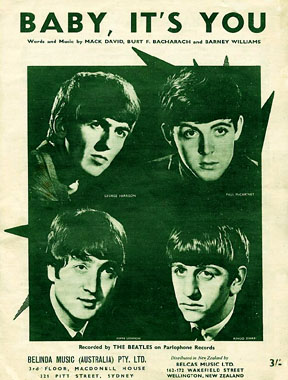 The song structure differs from every other song on this album in that it actually only consists of three verses (resulting in a structure of aaa), each ending with the title of the song as the hook line. The second half of each verse could be considered by some to be a chorus, although because of the overall chord structure of that second section (most noteworthy that the first chord of that section is not the key chord of the song), it appears that each whole musical phrase should be interpreted as a whopping 21 measure verse. The song structure differs from every other song on this album in that it actually only consists of three verses (resulting in a structure of aaa), each ending with the title of the song as the hook line. The second half of each verse could be considered by some to be a chorus, although because of the overall chord structure of that second section (most noteworthy that the first chord of that section is not the key chord of the song), it appears that each whole musical phrase should be interpreted as a whopping 21 measure verse.
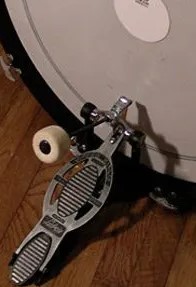 The Beatles completely mimicked the structure of the original Shirelles recording, not wanting to tamper with the "girl group" classic they so deeply admired. After a six measure intro, which includes the “sha-la-la” harmonies by McCartney and Harrison and concludes with a dramatic break in the final measure, verse number one commences, featuring the squeaking bass pedal of Ringo’s drum kit. The Beatles completely mimicked the structure of the original Shirelles recording, not wanting to tamper with the "girl group" classic they so deeply admired. After a six measure intro, which includes the “sha-la-la” harmonies by McCartney and Harrison and concludes with a dramatic break in the final measure, verse number one commences, featuring the squeaking bass pedal of Ringo’s drum kit.
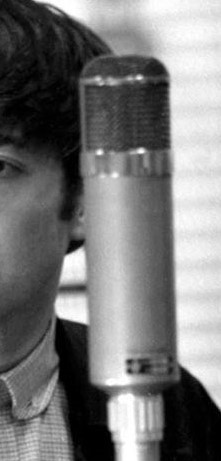 Lennon delivers a confident lead vocal which is accentuated in measure four by the recurrence of the distinctive “sha-la-la” harmonies. As the verse segues into the second dramatic half, the background harmonies become a hushed and subtle backdrop that creates a suitable effect for accompanying the song's painful lyrics. As this verse nears its end, the emotive lead vocals are superimposed against accentuated background vocals which creates an irresistible climax that leads us to the ultimate break. The title of the song is then revealed which is forever impressed on the listener's mind as the ultimate hook line. (Surprisingly, various listeners have mistaken this song's title to be “Sha-la-la-la-la” because this phrase is heard repeatedly throughout, as discussed on the track “Sha-la-la-la-la!” on their “Live At The BBC” album.) Lennon delivers a confident lead vocal which is accentuated in measure four by the recurrence of the distinctive “sha-la-la” harmonies. As the verse segues into the second dramatic half, the background harmonies become a hushed and subtle backdrop that creates a suitable effect for accompanying the song's painful lyrics. As this verse nears its end, the emotive lead vocals are superimposed against accentuated background vocals which creates an irresistible climax that leads us to the ultimate break. The title of the song is then revealed which is forever impressed on the listener's mind as the ultimate hook line. (Surprisingly, various listeners have mistaken this song's title to be “Sha-la-la-la-la” because this phrase is heard repeatedly throughout, as discussed on the track “Sha-la-la-la-la!” on their “Live At The BBC” album.) 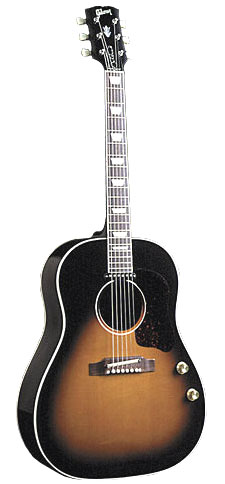 A second verse then occurs having the identical structure but adding additional touches of background harmonies (”cheat, cheat”) deemed appropriate with the lyrical content of that verse. What seems to be a third verse follows next. The first section of this verse consists of the solo portion of the song, performed simultaneously by George Harrison on guitar and George Martin on celeste. The chord structure appearing in this section is also slightly different than the previous verses, being that it contains an added D major chord between each C major and G major of the verse. A second verse then occurs having the identical structure but adding additional touches of background harmonies (”cheat, cheat”) deemed appropriate with the lyrical content of that verse. What seems to be a third verse follows next. The first section of this verse consists of the solo portion of the song, performed simultaneously by George Harrison on guitar and George Martin on celeste. The chord structure appearing in this section is also slightly different than the previous verses, being that it contains an added D major chord between each C major and G major of the verse.
This then leads us into the dramatic second half of the verse, which is a repetition of the second verse and is sung to a tee by Lennon, unlike the repeat of the first verse in original Shirelles version. The last two chords of the verse are then alternated repeatedly amidst the “sha-la-la” backing vocals and accentuated lead vocals from John as the song fades.
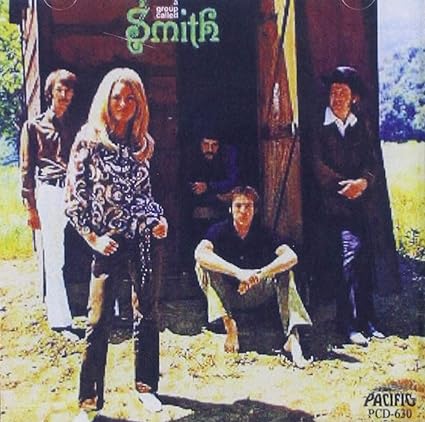 As far as musicianship goes, The Beatles stay true to form in mimicking the original Shirelles recording, not adding as much as a new guitar flourish or drum fill. The group took such liberties with other cover songs done on this day (such as “Boys” also by The Shirelles), but they knew that anything added could very well have detracted from the effect of this well-crafted composition. Different interpretations would have to wait until the year 1969, with the excellent bluesy powerhouse rendition by the group Smith, who took the song all the way to number five on the US Billboard Hot 100. As far as musicianship goes, The Beatles stay true to form in mimicking the original Shirelles recording, not adding as much as a new guitar flourish or drum fill. The group took such liberties with other cover songs done on this day (such as “Boys” also by The Shirelles), but they knew that anything added could very well have detracted from the effect of this well-crafted composition. Different interpretations would have to wait until the year 1969, with the excellent bluesy powerhouse rendition by the group Smith, who took the song all the way to number five on the US Billboard Hot 100.
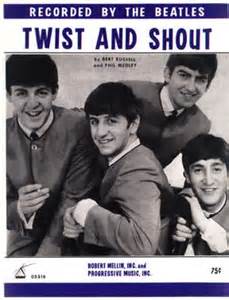 The vocal performance here is quite commanding and confident, unlike the rather timid and unsure vocals John sang on his own compositions recorded on this day. It is also noteworthy that, due to his having a terrible cold, Lennon's voice is finally beginning to show some cracking on this recording, noticed expecially in the climatic “don’t want nobody” lines. John's cracking gives the song character, however, and is especially prominent in the next and final song recorded on this day “Twist And Shout.” The vocal performance here is quite commanding and confident, unlike the rather timid and unsure vocals John sang on his own compositions recorded on this day. It is also noteworthy that, due to his having a terrible cold, Lennon's voice is finally beginning to show some cracking on this recording, noticed expecially in the climatic “don’t want nobody” lines. John's cracking gives the song character, however, and is especially prominent in the next and final song recorded on this day “Twist And Shout.”
 The lyrics effectively portray the anguish felt when one discovers infidelity and are very well suited with the melody line and chord structure of the song. Strategically, the first verse paints the picture of the singer recounting the reasons why he loves his “baby,” but then leaves a question mark in our minds as to why he cries at night about her (or ‘him’ in the case of The Shirelles). Instead of verse two just rehashing verse one (as many Beatles' songs do), this song adds to the story with the second verse, revealing that the singer has heard about his girl ‘never being true,’ which answers the question from verse one. The story then is summed up as the singer resolves that "it doesn’t matter"; he’s going to continue the relationship “any old way.” This impressive display of lyric writing (building upon the story with each verse) is an evidence of songwriting professionalism which continues to this day, especially in the field of country music. The lyrics effectively portray the anguish felt when one discovers infidelity and are very well suited with the melody line and chord structure of the song. Strategically, the first verse paints the picture of the singer recounting the reasons why he loves his “baby,” but then leaves a question mark in our minds as to why he cries at night about her (or ‘him’ in the case of The Shirelles). Instead of verse two just rehashing verse one (as many Beatles' songs do), this song adds to the story with the second verse, revealing that the singer has heard about his girl ‘never being true,’ which answers the question from verse one. The story then is summed up as the singer resolves that "it doesn’t matter"; he’s going to continue the relationship “any old way.” This impressive display of lyric writing (building upon the story with each verse) is an evidence of songwriting professionalism which continues to this day, especially in the field of country music.
 Vee-Jay's "Introducing The Beatles" album
|
American Releases
Although "Baby It's You" is considered by most to be an obscure Beatles track, it actually appears on two different million selling albums. The first appearance is on Vee-Jay's LP “Introducing…The Beatles” which was the first US album release for the group on January 10th, 1964. It appears on both versions of the album, which means that no matter when they may have bought the American Billboard #2 hit album in 1964, all 1.3 million buyers received the song “Baby It’s You.”
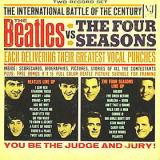 The next releases of the song in America were found on two attempts by Vee-Jay Records to capitalize on The Beatles' success before the label's court ordered contract expired on October 15th, 1964. Their first attempt was the double album “The Beatles vs. The Four Seasons,” which put together the “Introducing The Beatles” album with “The Golden Hits of the Four Seasons.” This was released on October 1st, 1964 and reached only to #142 on the Billboard chart. The next releases of the song in America were found on two attempts by Vee-Jay Records to capitalize on The Beatles' success before the label's court ordered contract expired on October 15th, 1964. Their first attempt was the double album “The Beatles vs. The Four Seasons,” which put together the “Introducing The Beatles” album with “The Golden Hits of the Four Seasons.” This was released on October 1st, 1964 and reached only to #142 on the Billboard chart.
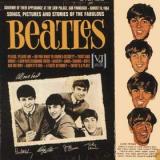 On October 12th, Vee-Jay re-released that same album once again as “Songs, Pictures And Stories Of The Fabulous Beatles,” which managed to actually reach #63 on the US Billboard album chart. Combining these two October releases, another 420,000 record buyers now had a copy of “Baby It’s You,” unless, that is, they mistakenly purchased the same album twice (as many had). On October 12th, Vee-Jay re-released that same album once again as “Songs, Pictures And Stories Of The Fabulous Beatles,” which managed to actually reach #63 on the US Billboard album chart. Combining these two October releases, another 420,000 record buyers now had a copy of “Baby It’s You,” unless, that is, they mistakenly purchased the same album twice (as many had).
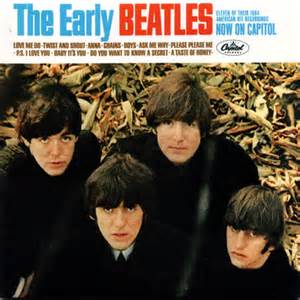 Capitol Records now takes the ball as they release their album “The Early Beatles” on March 22nd, 1965. This LP, which features “Baby It’s You,” fails to reach the Top 40 (peaking at #43 on the Billboard album chart) but reported quite respectable sales of 500,000 copies. Not bad at all for an album that, for all intents and purposes, had been released in the US three times previously. Incidentally, mono copies of this LP contains "Type B" mixes of the songs created by Capitol Records that combined both channels of the stereo mix into one, the legitimate mono mixes of these songs created by George Martin appearing on the above mentioned Vee-Jay releases. "The Early Beatles" first appeared on CD on January 21st, 2014, this containing both the original mono and stereo mixes on one disc. Capitol Records now takes the ball as they release their album “The Early Beatles” on March 22nd, 1965. This LP, which features “Baby It’s You,” fails to reach the Top 40 (peaking at #43 on the Billboard album chart) but reported quite respectable sales of 500,000 copies. Not bad at all for an album that, for all intents and purposes, had been released in the US three times previously. Incidentally, mono copies of this LP contains "Type B" mixes of the songs created by Capitol Records that combined both channels of the stereo mix into one, the legitimate mono mixes of these songs created by George Martin appearing on the above mentioned Vee-Jay releases. "The Early Beatles" first appeared on CD on January 21st, 2014, this containing both the original mono and stereo mixes on one disc.
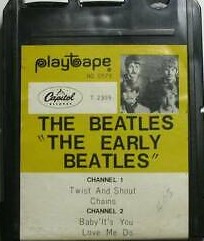 Sometime during 1967, Capitol released Beatles music on a brand new but short-lived format called "Playtapes." These tape cartridges did not have the capability of including entire LPs, so two four-song versions of "The Early Beatles" were released in this portable format, "Baby It's You" being on one of these. "Playtapes" are very hard to find today and are highly collectable. Sometime during 1967, Capitol released Beatles music on a brand new but short-lived format called "Playtapes." These tape cartridges did not have the capability of including entire LPs, so two four-song versions of "The Early Beatles" were released in this portable format, "Baby It's You" being on one of these. "Playtapes" are very hard to find today and are highly collectable.
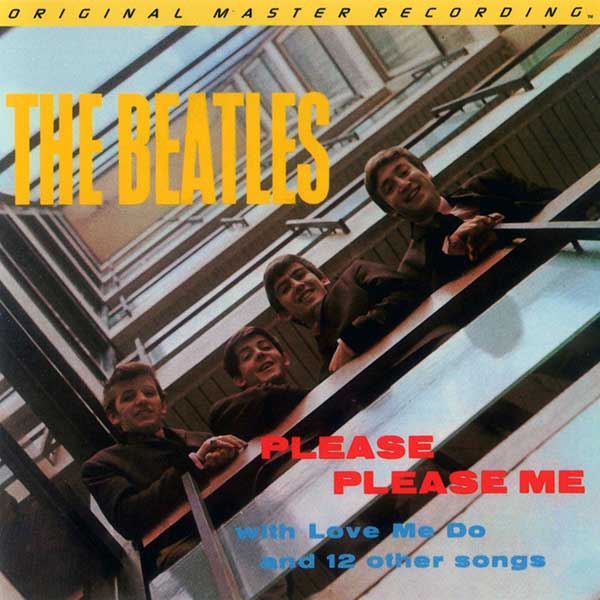 The first time the original British "Please Please Me" album was made available in the US was the "Original Master Recording" vinyl edition released through Mobile Fidelity Sound Lab in January of 1987. This album included "Baby It's You" and was created utilizing new half-speed mastering technology from the original master tape on loan from EMI. This version of the album was only available for a short time and has become hard to find today. The first time the original British "Please Please Me" album was made available in the US was the "Original Master Recording" vinyl edition released through Mobile Fidelity Sound Lab in January of 1987. This album included "Baby It's You" and was created utilizing new half-speed mastering technology from the original master tape on loan from EMI. This version of the album was only available for a short time and has become hard to find today.
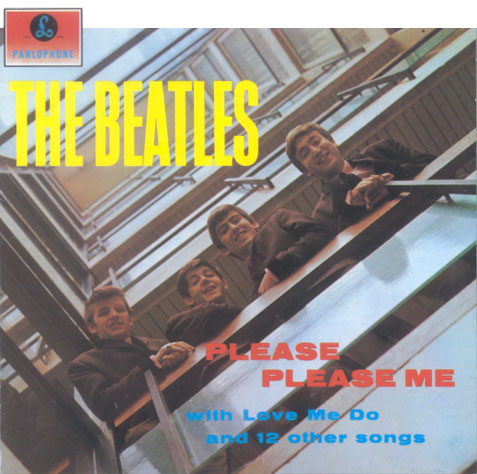 February 26th, 1987 became the release date of the first official Beatles CD, this being the, "Please Please Me" album featuring "Baby It's You," a vinyl edition coming out in America on July 21st, 1987. While these releases were in mono only, as were the following three Beatles LPs, a remastered stereo edition of "Please Please Me" came out on compact disc on September 9th, 2009 with a vinyl edition being released on November 13th, 2012. February 26th, 1987 became the release date of the first official Beatles CD, this being the, "Please Please Me" album featuring "Baby It's You," a vinyl edition coming out in America on July 21st, 1987. While these releases were in mono only, as were the following three Beatles LPs, a remastered stereo edition of "Please Please Me" came out on compact disc on September 9th, 2009 with a vinyl edition being released on November 13th, 2012.
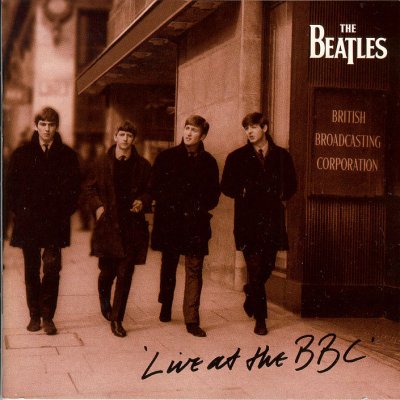 Apple Records then included the song on their December 6th, 1994 release titled “Live At The BBC.” The band recorded the song for the BBC on June 1st, 1963 at the BBC Paris Theatre in London. A #3 placement on the Billboard album chart, as well as over 2 million copies sold, brought much needed exposure to a great rendition of a great song. A remastered and re-packaged version of this album was released on November 11th, 2013. Apple Records then included the song on their December 6th, 1994 release titled “Live At The BBC.” The band recorded the song for the BBC on June 1st, 1963 at the BBC Paris Theatre in London. A #3 placement on the Billboard album chart, as well as over 2 million copies sold, brought much needed exposure to a great rendition of a great song. A remastered and re-packaged version of this album was released on November 11th, 2013.
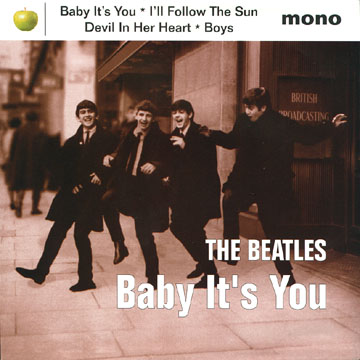 It was great enough, in fact, that the "powers that be" arranged for the song to be issued as the focal point of an EP released in the US on March 23rd, 1995. The EP was titled “Baby It’s You,” which contained the same version of the song that was on the “Live At The BBC” album. The other three EP tracks were “I’ll Follow The Sun,” “Devil In Her Heart” and “Boys,” these also recorded for the BBC in the early '60s but not included on the "Live At The BBC" album. This EP peaked at #67 on the US Billboard Hot 100 (reaching #7 in the UK). It was great enough, in fact, that the "powers that be" arranged for the song to be issued as the focal point of an EP released in the US on March 23rd, 1995. The EP was titled “Baby It’s You,” which contained the same version of the song that was on the “Live At The BBC” album. The other three EP tracks were “I’ll Follow The Sun,” “Devil In Her Heart” and “Boys,” these also recorded for the BBC in the early '60s but not included on the "Live At The BBC" album. This EP peaked at #67 on the US Billboard Hot 100 (reaching #7 in the UK).
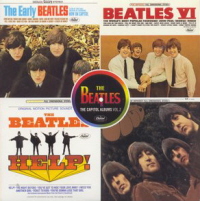 April 11th, 2006 brought yet another release of the song as contained in the box set “The Capitol Albums, Vol. 2," which contained the stereo mix and the "Type B" foldover mono mix as originally releasd on vinyl back in 1965. This highly anticipated box set peaked at #46 on the Billboard album chart. Just prior to this release, a promotional CD sampler was issued to radio stations that included both the stereo and "Type B" mono mixes of "Baby It's You." April 11th, 2006 brought yet another release of the song as contained in the box set “The Capitol Albums, Vol. 2," which contained the stereo mix and the "Type B" foldover mono mix as originally releasd on vinyl back in 1965. This highly anticipated box set peaked at #46 on the Billboard album chart. Just prior to this release, a promotional CD sampler was issued to radio stations that included both the stereo and "Type B" mono mixes of "Baby It's You."
On September 9th, 2009, the CD box set “The Beatles In Mono” also contained the song but in a revitalized, remastered state. The vinyl edition of this set was first released on September 9th, 2014.
Live Performances
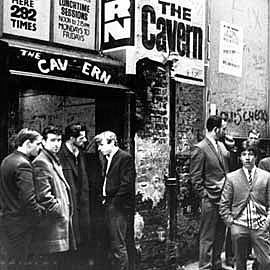 The Beatles’ choosing this song indicates that they were well acquainted with performing it live. They certainly had it down to a tee, which is understandable since the song hit the Top Ten in America as far back as February of 1962. It can confidently be concluded that the group started incorporating the song "Baby It's You" in their "stage act," with Pete Best as their drummer, as far back as March, 1962 during their steady gigs at The Cavern Club as well as their long hours of performing during their three residencies in Hamburg that year. The Beatles’ choosing this song indicates that they were well acquainted with performing it live. They certainly had it down to a tee, which is understandable since the song hit the Top Ten in America as far back as February of 1962. It can confidently be concluded that the group started incorporating the song "Baby It's You" in their "stage act," with Pete Best as their drummer, as far back as March, 1962 during their steady gigs at The Cavern Club as well as their long hours of performing during their three residencies in Hamburg that year.
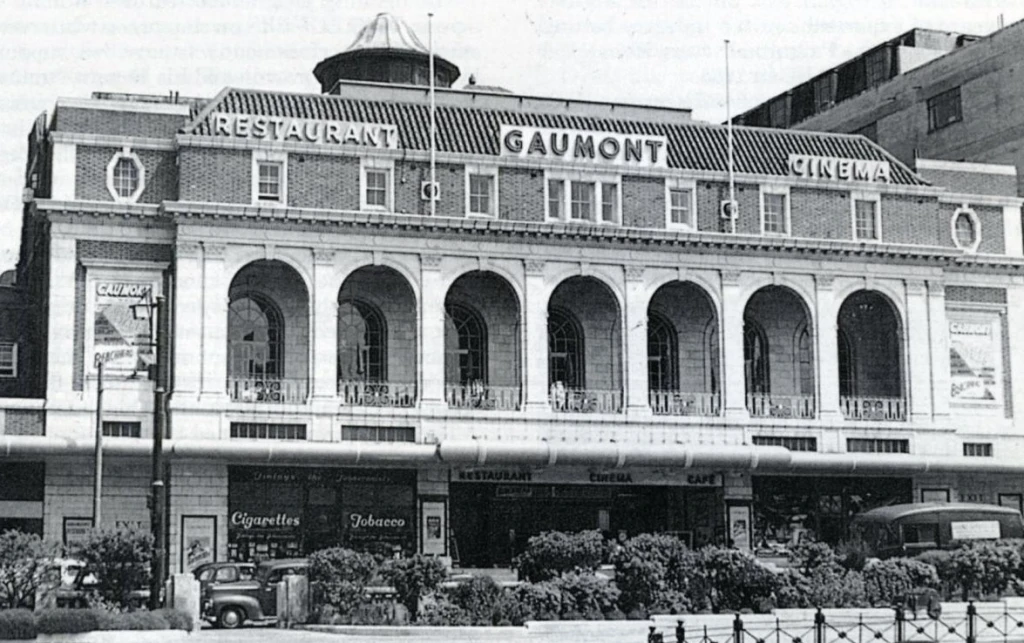 It continued to be performed throughout 1963 as well, as it was part of the set list during their week-long stint at the Winter Gardens at Margate, Kent from July 8th through 13th, along with their six night residency (August 19th through 24th) at The Gaumont Cinema in Bornemouth, Hants. Their last known performances of the song were at The Odeon Cinema in Southport during a six night residency between August 26th and 31st, 1963. It was then officially dropped from their set list with the release of their British LP “With The Beatles.” That being the case, The Beatles were never to perform the song on American shores. It continued to be performed throughout 1963 as well, as it was part of the set list during their week-long stint at the Winter Gardens at Margate, Kent from July 8th through 13th, along with their six night residency (August 19th through 24th) at The Gaumont Cinema in Bornemouth, Hants. Their last known performances of the song were at The Odeon Cinema in Southport during a six night residency between August 26th and 31st, 1963. It was then officially dropped from their set list with the release of their British LP “With The Beatles.” That being the case, The Beatles were never to perform the song on American shores.
.jpg) Interestingly, a music video was officially released through Apple in 1994 to help promote the above mentioned "Baby It's You" EP, this consisting of still photographs and rare film footage of them in 1963. This video was later included in the 2015 "Beatles 1+" DVD Blu-ray release. Interestingly, a music video was officially released through Apple in 1994 to help promote the above mentioned "Baby It's You" EP, this consisting of still photographs and rare film footage of them in 1963. This video was later included in the 2015 "Beatles 1+" DVD Blu-ray release.
Conclusion
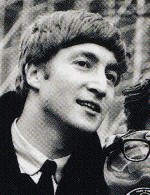 Only The Beatles could pull off an on-the-spot rendition of a classic US “girl group” hit with all the odds against them. It was late in the evening after a full day in the studio with little time left on the clock. They were just in for the day as a break from an exhausting national tour. Not to mention that the lead singer had a very bad cold and his voice was beginning to give out. Only The Beatles could pull off an on-the-spot rendition of a classic US “girl group” hit with all the odds against them. It was late in the evening after a full day in the studio with little time left on the clock. They were just in for the day as a break from an exhausting national tour. Not to mention that the lead singer had a very bad cold and his voice was beginning to give out.
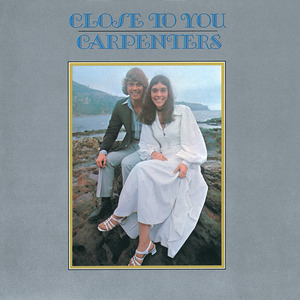 With all of this in the mix, The Beatles nailed it. Confident lead vocals, great attention to detail, and spot-on harmonies led to a perfect execution of an excellently written song. With all of this in the mix, The Beatles nailed it. Confident lead vocals, great attention to detail, and spot-on harmonies led to a perfect execution of an excellently written song.
Credit must be given to Burt Bacharach, Mack David and Barney Williams (aka Luther Dixon) for writing a song that sounds great no matter who performs it, be it The Beatles, The Shirelles, Smith, Nick Lowe / Elvis Costello or The Carpenters. Any way you slice it, a great song is a great song.
Song Summary
“Baby It’s You”
Written by: Mack David / Burt Bacharach / Barney Williams
- Song Written: November 1961
- Song Recorded: February 11 and 20, 1963
- First US Release Date: January 6, 1964
- First US Album Release: Vee Jay #VJLP 1062 “Introducing…The Beatles”
- US Single Release: Apple #58348 “Baby It’s You” (EP)
- Highest Chart Position: #67
- British Album Release: Parlophone #PCS3042 “Please Please Me”
- Length: 2:38
- Key: G major
- Producer: George Martin
- Engineers: Norman Smith, Richard Langham
Instrumentation (most likely):
- John Lennon - Lead Vocals, Rhythm Guitar (1958 Rickenbacker 325)
- Paul McCartney - Bass Guitar (1961 Hofner 500/1), Background Vocals
- George Harrison – Lead and Rhythm Guitar (1962 Gibson J160E), Background Vocals
- Ringo Starr – Drums (1960 Premier 58/54 Mahogany)
- George Martin - Celeste (Schiedmayer)
Written and compiled by Dave Rybaczewski
|
IF YOU WOULD LIKE TO MAKE A DONATION TO KEEP THIS WEBSITE UP AND RUNNING, PLEASE CLICK BELOW!
Sign Up Below for our MONTHLY BEATLES TRIVIA QUIZ!
|